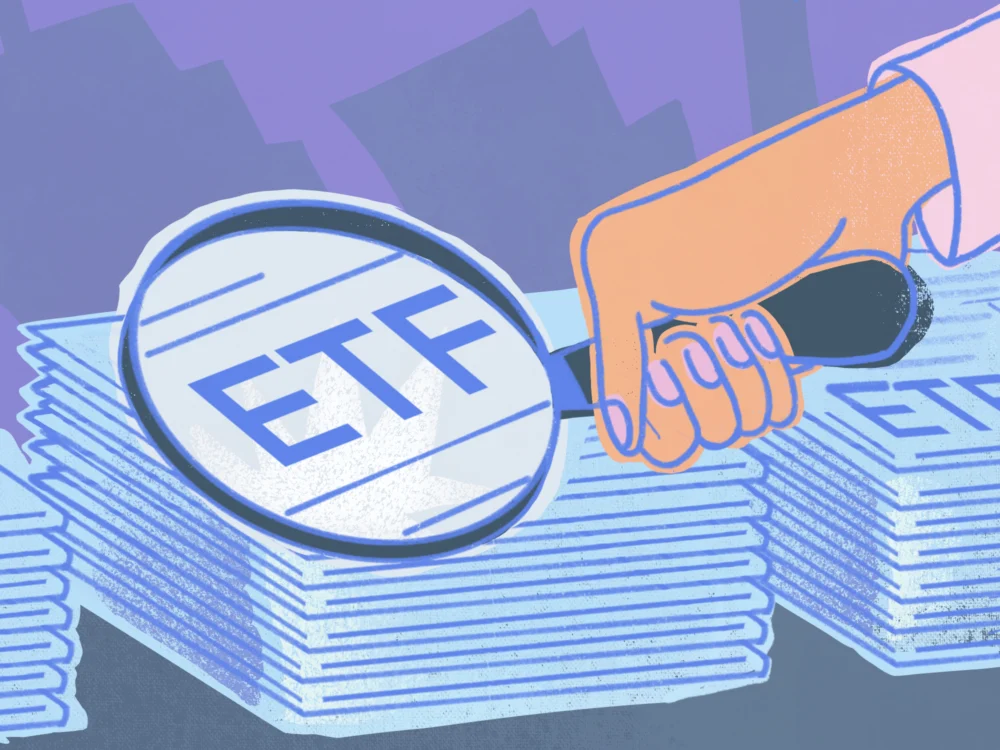Exchange-Traded Funds (ETFs) have become increasingly popular investment vehicles in recent years, offering a hybrid between individual stock investments and mutual funds. But what exactly is an ETF, and how does it differ from traditional mutual funds? In this blog, we’ll explore the concept of ETFs, their benefits and drawbacks, and how they compare to mutual funds.
What is an Exchange-Traded Fund (ETF)?
An Exchange-Traded Fund (ETF) is essentially a fund that holds a collection of securities, such as stocks, bonds, or commodities. However, unlike mutual funds, which are typically bought and sold only at the end of the trading day, ETFs can be traded on a stock exchange throughout the day—just like individual stocks.
While mutual funds pool money from many investors to buy a diversified portfolio of assets, ETFs offer a more flexible, lower-cost alternative. Many ETFs track indices, like the Nifty 50 or the S&P 500, meaning that they aim to replicate the performance of these benchmarks. While some ETFs are actively managed, most are passively managed to mirror the index they track.
Benefits and Drawbacks of ETF Investing
Benefits
Lower Cost: ETFs are typically less expensive than mutual funds. Because most ETFs are passively managed, the operating costs tend to be lower. Investors also save on brokerage fees whenbuying or selling ETFs compared to individual stocks.
Liquidity: One of the major advantages of ETFs is liquidity. Unlike mutual funds, which can only be bought or sold at the close of the trading day, ETFs can be traded at any time during regular trading hours. This allows for more flexibility when entering or exiting a position.
Less Risk and Effort: ETFs offer diversified exposure to a particular index, asset class, or sector, reducing the risk associated with investing in individual stocks. By tracking an index, investors automatically gain exposure to a broad range of assets with minimal effort.
Drawbacks
No Outperformance: Since most ETFs track indices, the returns are aligned with the index’s performance. This means there is little opportunity for the fund to outperform the market, unlike actively managed funds that aim to beat benchmarks.
Illiquidity: While most ETFs are highly liquid, thinly traded ETFs can pose a risk. In times of market stress or volatility, it may be difficult to sell a thinly traded ETF, making liquidity an issue when you need it most.
Tracking Error: An ETF might not perfectly replicate its benchmark index due to fees or timing issues. This “tracking error” can result in performance deviations from the index.
How ETFs Differ from Mutual Funds
Although ETFs and mutual funds both allow you to invest in a diversified portfolio, they have several key differences:
Investment Style:
- ETFs: Most ETFs are passively managed, meaning they track an index.
- Mutual Funds (MFs): Mutual funds can be either actively or passively managed, with actively managed funds attempting to outperform the market.
Trading:
- ETFs: These can be bought or sold at any time during the trading day, offering more flexibility.
- Mutual Funds: Trading takes place only once a day, at the end of the trading day.
Liquidity:
- ETFs: They offer higher liquidity since they can be bought or sold whenever the stock market is open.
- Mutual Funds: They are less liquid due to limited redemption options and can only be transacted once a day.
Cost:
- ETFs: Generally, ETFs have lower expense ratios because they are passively managed.
- Mutual Funds: These tend to have higher management fees, especially if they are actively managed.
Diversification:
- ETFs: Most ETFs focus on tracking an index, offering more concentrated exposure.
- Mutual Funds (MFs): Mutual funds often offer a broader range of diversification, giving investors exposure to a variety of sectors, asset classes, or investment strategies, depending on whether the fund is actively or passively managed.
Minimum Investment:
- ETFs: ETFs do not typically require a minimum investment. You can buy as little as one share of an ETF, depending on its market price.
- Mutual Funds: Many mutual funds have a minimum investment requirement, which can vary depending on the fund provider and type of mutual fund.
Exit Load:
- ETFs: Since ETFs are traded like stocks, there is no exit load or penalty for selling the fund at any time.
- Mutual Funds: Some mutual funds may charge an exit load if you redeem your investment before a specified period, especially in actively managed funds where the holding period is important for fund managers to maintain their strategies.
Pros and Cons of ETFs vs. Mutual Funds
While both ETFs and mutual funds offer diversified investment options, their benefits and drawbacks vary depending on your financial goals, trading preferences, and investment style.
When ETFs Might Be a Better Option:
- If you prefer lower costs: Since most ETFs are passively managed, they tend to have lower operating costs and management fees.
- If you require flexibility and liquidity: ETFs can be traded throughout the day, allowing you to buy or sell whenever the stock market is open.
- If you seek long-term passive investing: Investors looking for simple exposure to an index or a specific sector without the need for active management may find ETFs more appealing.
When Mutual Funds Might Be a Better Option:
- If you’re interested in active management: Actively managed mutual funds offer the potential for outperforming the market, making them attractive for investors looking to beat an index.
- If you prefer automatic reinvestment: Mutual funds often reinvest dividends and interest income automatically, which can be convenient for investors who want their returns to compound over time.
- If you’re looking for broader diversification: Mutual funds may offer more diverse holdings, as they are not limited to tracking a specific index.
Conclusion
Both ETFs and mutual funds have their advantages and limitations, and the right choice depends on your individual financial goals and investment strategy. ETFs provide liquidity, cost-efficiency, and the simplicity of passive management, making them a great option for many investors. On the other hand, mutual funds, especially those that are actively managed, may be better suited for investors looking for the potential to outperform the market or for broader diversification.
Before deciding whether to invest in ETFs or mutual funds, consider factors such as your investment timeline, risk tolerance, cost preferences, and the level of involvement you want in managing your investments. Always remember that each investment vehicle comes with its own set of risks and rewards, so it’s important to choose the option that aligns with your overall financial strategy.
If you’re still unsure which investment type is right for you, consulting with a financial advisor can help you tailor your investment portfolio to meet your specific goals.








